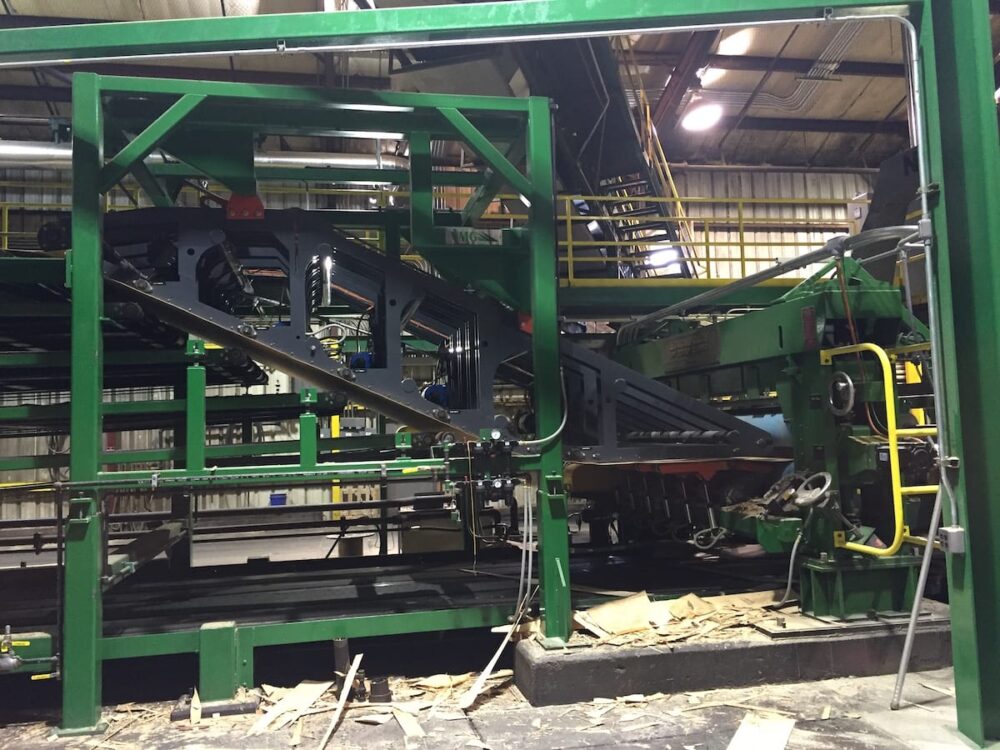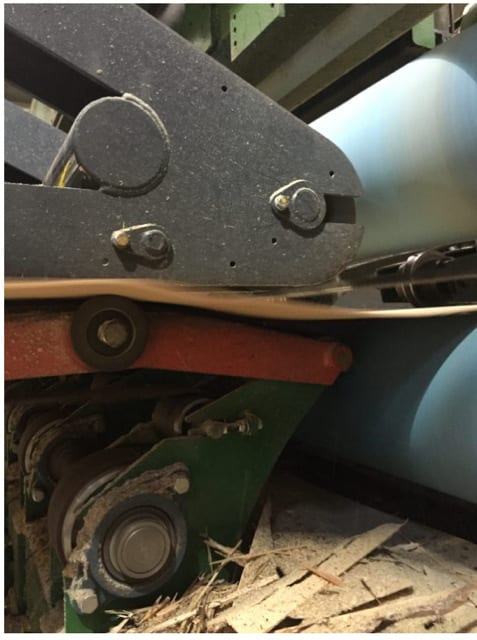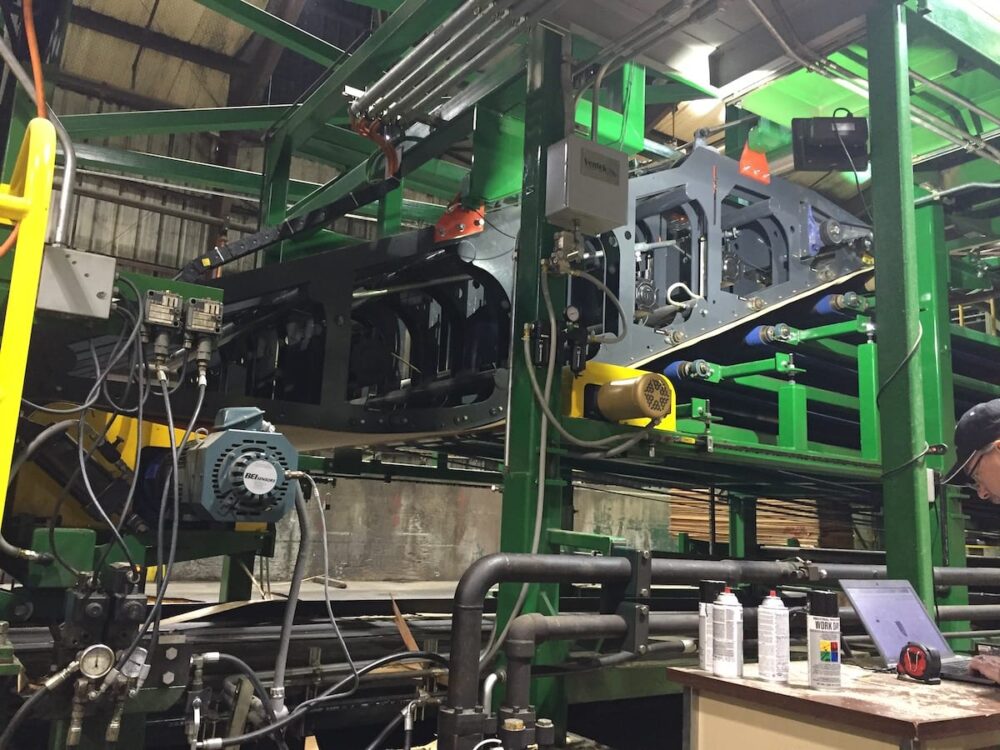There have been many technological advances in veneer manufacturing over the years. One of the more recent advances in our industry has been the development of the Multi-Point Diverter System (MPDS) by a local Oregon company, Ventek Inc.

The MPDS replaces traditional vacuum diverter systems, and eliminates a landing table after the rotary clipper. Vacuum systems can be used to successfully divert full and half sheets, but typically cannot handle narrow pieces of veneer due to the lack of surface area available to carry across the vacuum plenum. Random, Fishtail, and trash veneer are typically ignored by the vacuum diverter and are transported to a green chain and stacked manually.

The MPDS, I believe, is an elegant piece of machinery with a simple yet effective design. Spiked belts tied to the clipper speed “trap” veneer after the clip with a pinch belt assembly and control it to a number of divert points depending on the configuration of the particular mill. Servo motor driven divert points knock veneer from the spikes to its designated tray, whether that be a strip tray or to a full or half sheet stacker. “Trash” is determined by the clipper scanner and is knocked off in the trash return.
Freres Lumber Company installed our first MPDS in the Spring of 2012 on our small log line, and our second over Christmas of 2014 on our large log line. The diameter at each line is about 9” and 15” respectively. The basic design between the two systems was similar, though Ventek did make significant improvements since our first MPDS was installed which encouraged us to invest in our second.
Improvements
1. The geometry of the diverter was changed to allow a consistent angle for multiple divert points, and to more easily install trays at these points.
2. The trash divert point is now installed before a break in the angle of the diverter, which reduces carry-over of trash that can sometimes plug strip trays.
3. Belts from servos to divert point shafts were changed to chain for more positive control and to reduce issues of debris inhibiting divert point function.
4. Servo motors were moved towards the outside edge of the diverter frame to allow better access to the motors and the divert point chains.

These were substantial improvements that, we feel, addressed many of the issues that we had faced with our first diverter installation. However, by no means did they address all the issues created by running an MPDS on a traditional line.
Cons
1. The MPDS is an unforgiving piece of equipment. Presentation issues previously handled relatively easy at the green chain can create serious plug ups at the MPDS. Good presentation to the clipper, with minimal lapped ribbon or skewed sheets, is essential for the MPDS to effectively handle veneer. Variation in timing due to worn parts or encoder issues can also be extremely detrimental to its operation.
2. Wood quality is important in order to effectively divert veneer. Wood with little body that cannot be positively diverted can hang on to a spike and be dragged along to a later divert point, causing plug-ups.
3. Line alignment is important! Since the MPDS traps the veneer from the clipper, it transfers product from the lathe to the clipper, or between the clipper and stacker at an angle and skewing will present itself immediately. While we had thought that our lines were installed properly relative to lathe centerline, we found on short order that our stacker was skewed by as much as 8”. This was not an issue or apparent prior to installation.
4. The scanner providing the clip signal to the rotary clipper (in our case we use both a Ventek NuVision at our small log line and a Ventek NV4g at our large log line) tells the MPDS where to send the wood. It is imperative that the clip decision is sound or you may find good wood being diverted to the chipper, with no chance to retrieve it. Any pieces below a specified minimum clip width will automatically be diverted, even if it is good wood.
However, we obviously made the decision to purchase a second diverter because we felt that the benefits vastly outweighed the detriments to the system. Some of these benefits are:
Pros
1. The ability to drop out trash prior to the strip trays reduces strip tray full time and, theoretically, every piece of veneer on the strip tray is good wood. This is obviously a more efficient use of strip tray and green chain space, which has created record production runs that we had previously thought unachievable.
2. The design of the divert points on the diverter is simple, effective, and flexible. It may often replace (as in our previous systems) complicated and maintenance intensive tipples, belts, or divert rods to the strip trays.
3. The MPDS provides increased flexibility to our operations, with the ability to determine destination for not only the full sheets, but also to target 27’s, random, and fishtail to particular trays.
4. Coupled with the addition of two more strip trays at our large log mill, we have estimated almost 10% improvement in production overall.
Take a look at the Ventek Multi-Point Diverter System in action at Freres Lumber Company.
Subscribe
We’ll send you a notification when a new story has been posted. It’s the easiest way to stay in the know.